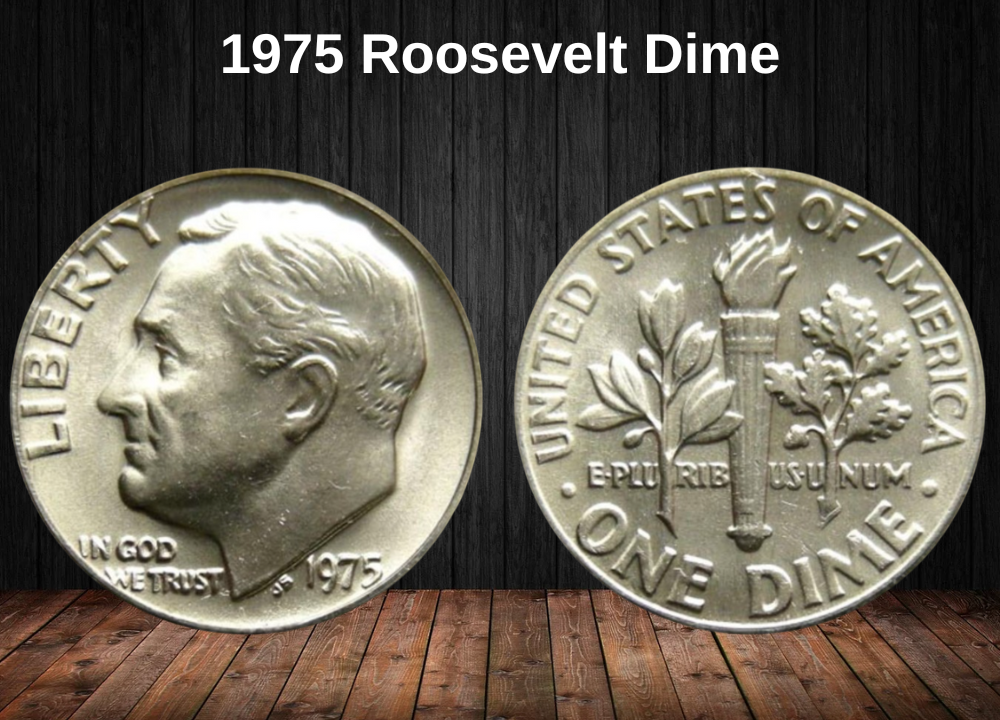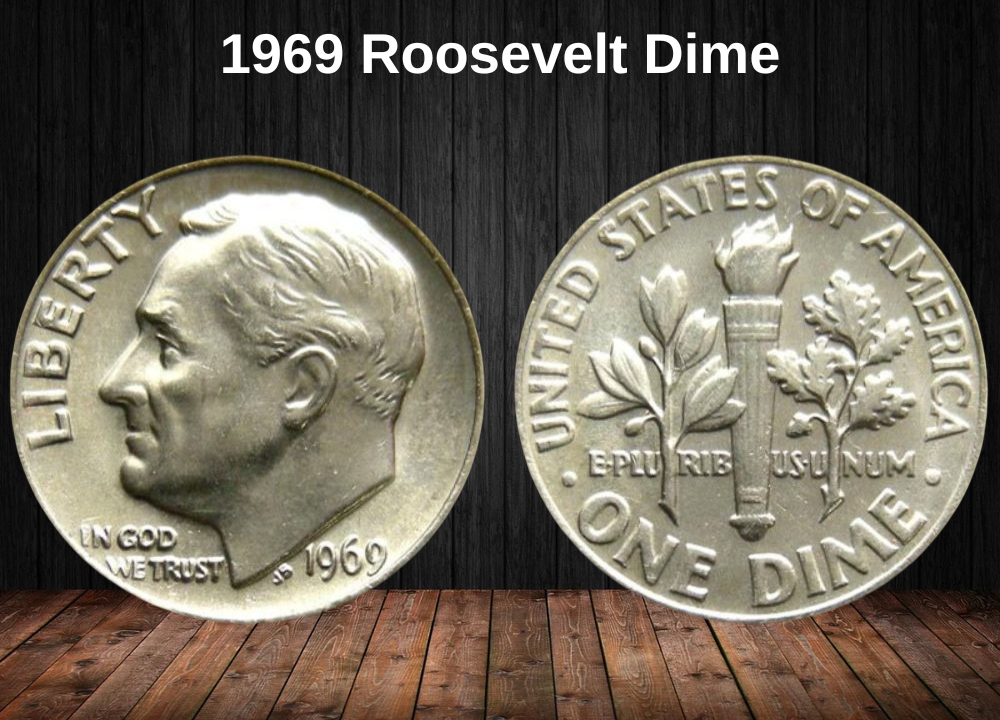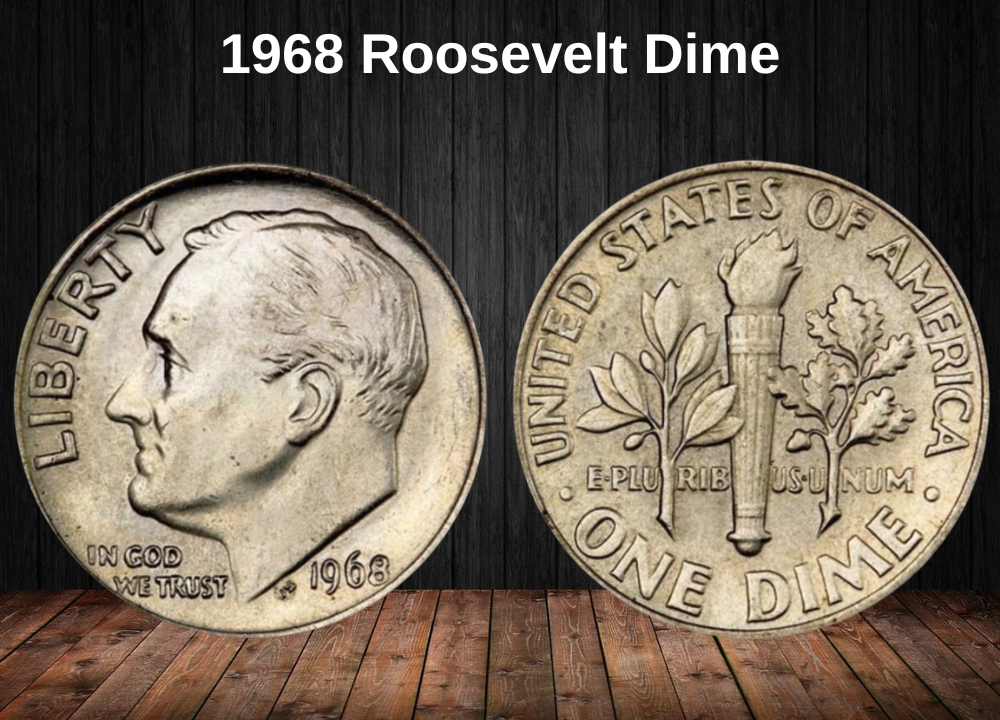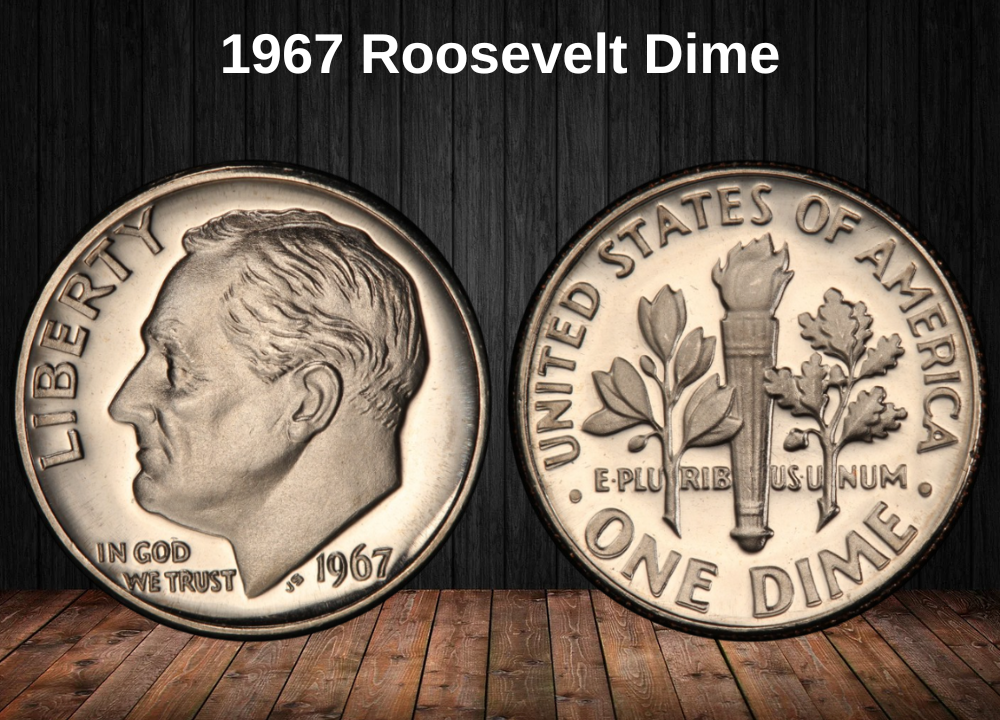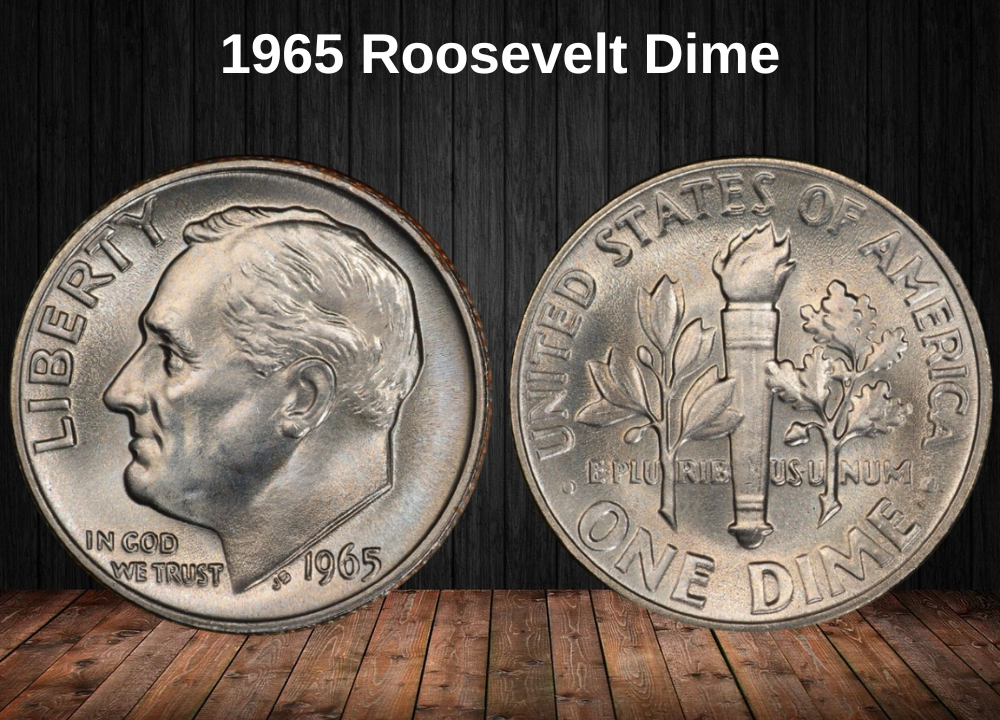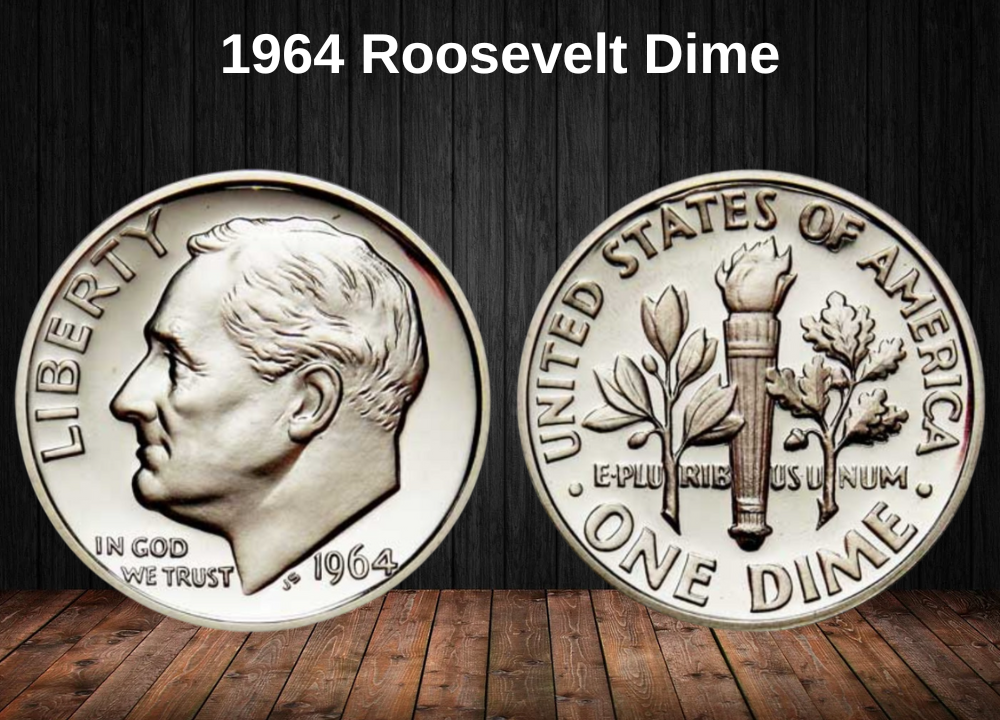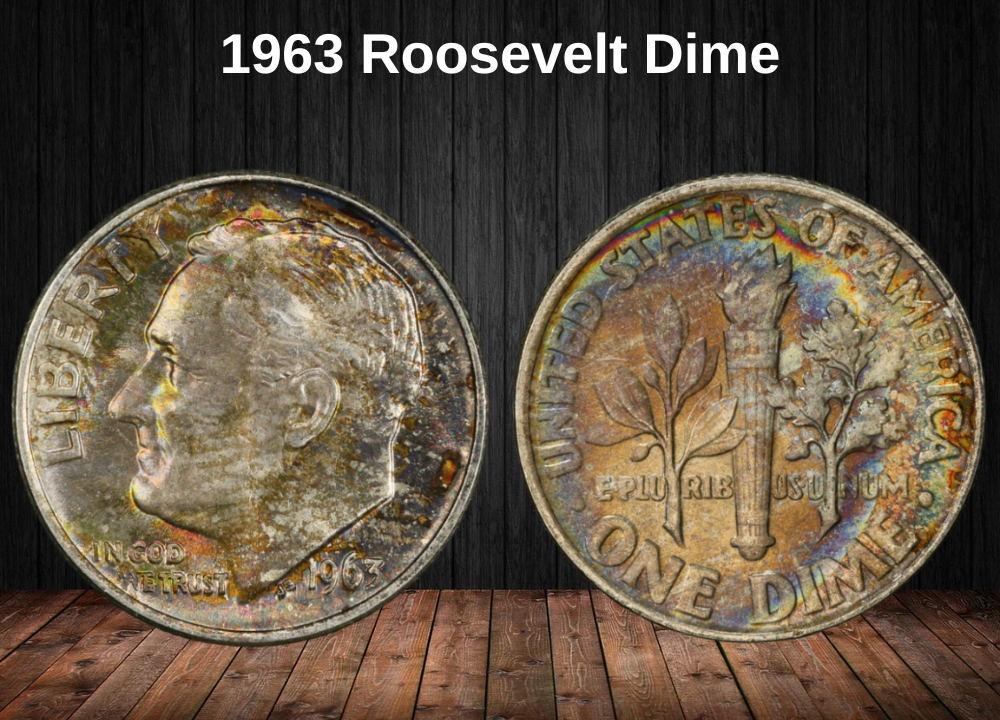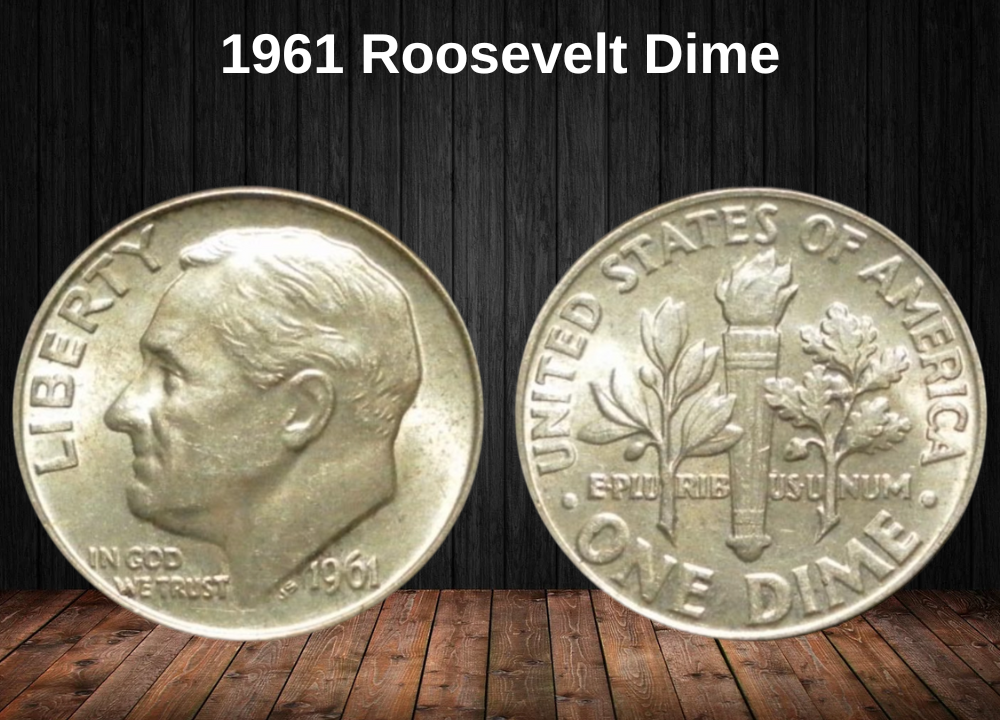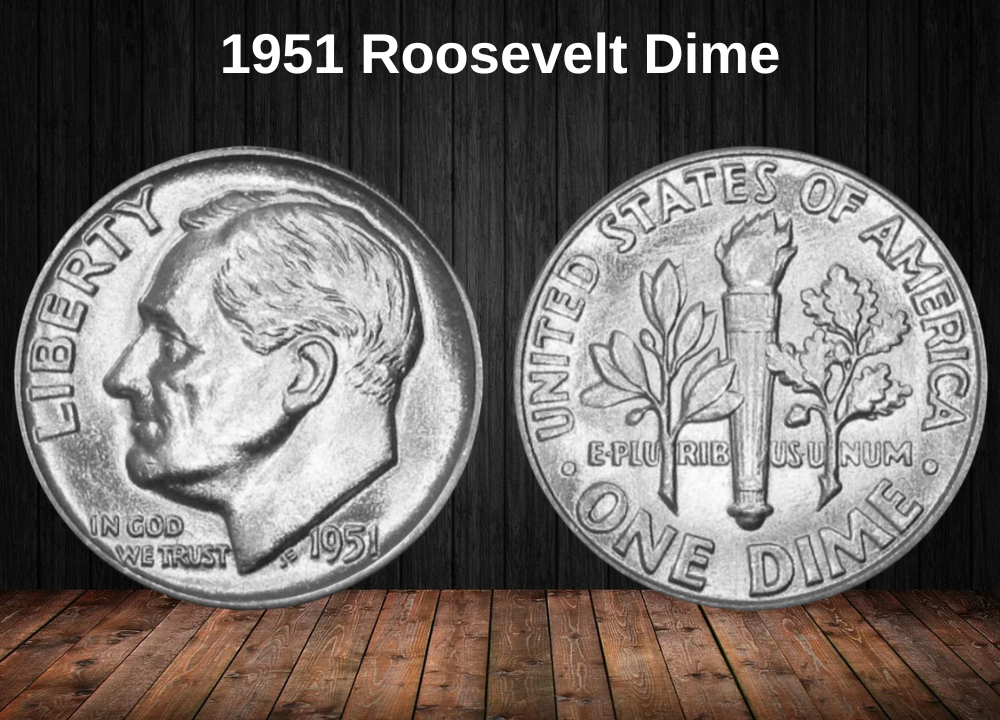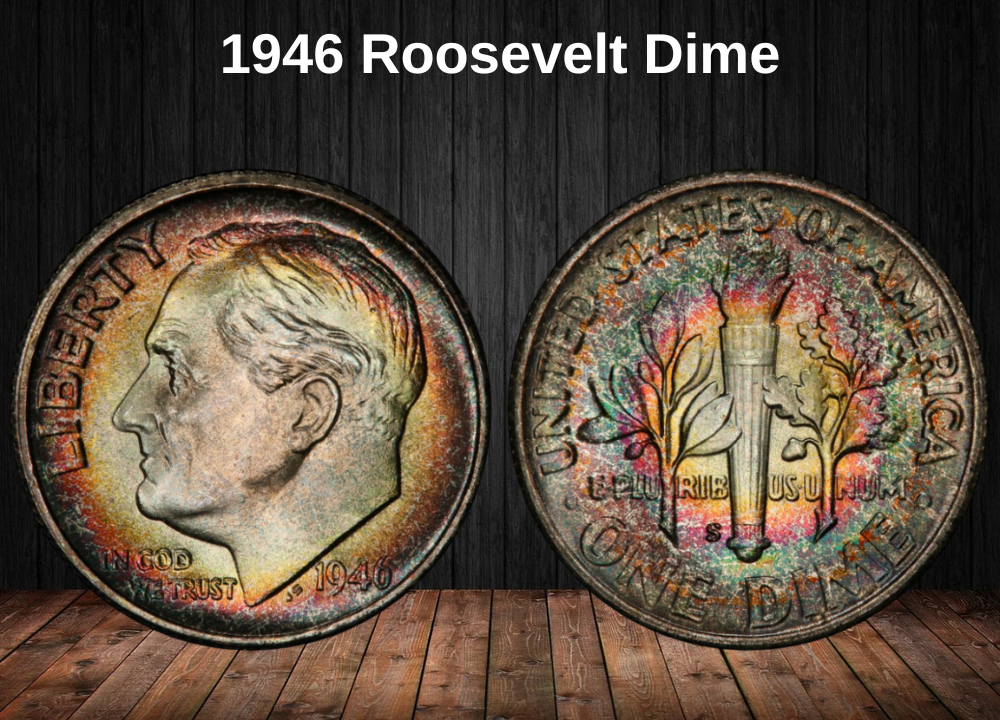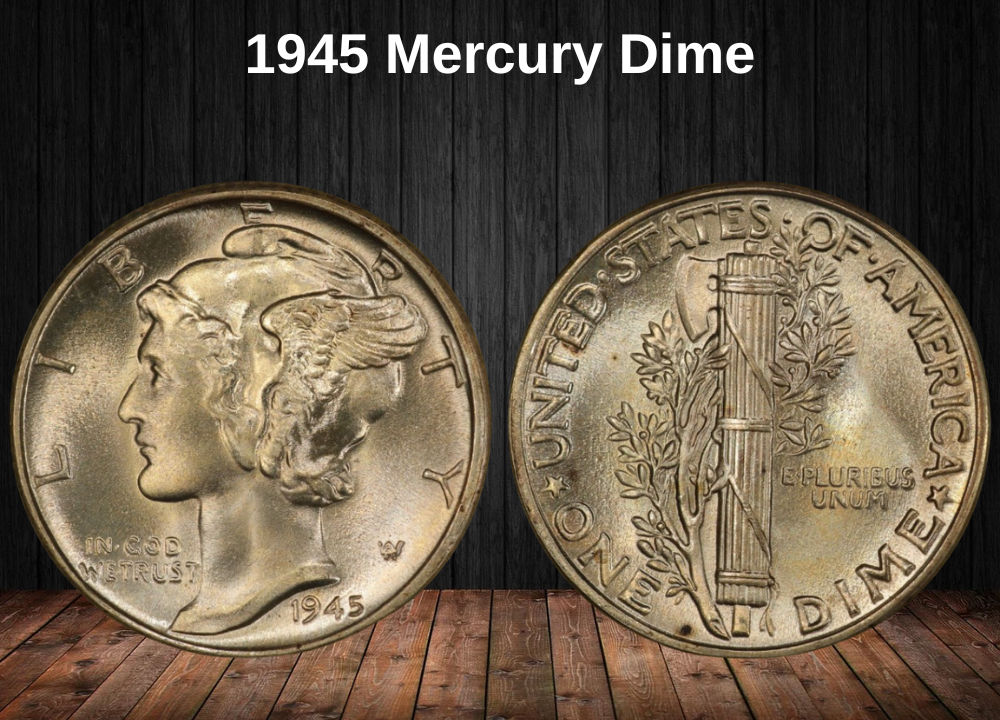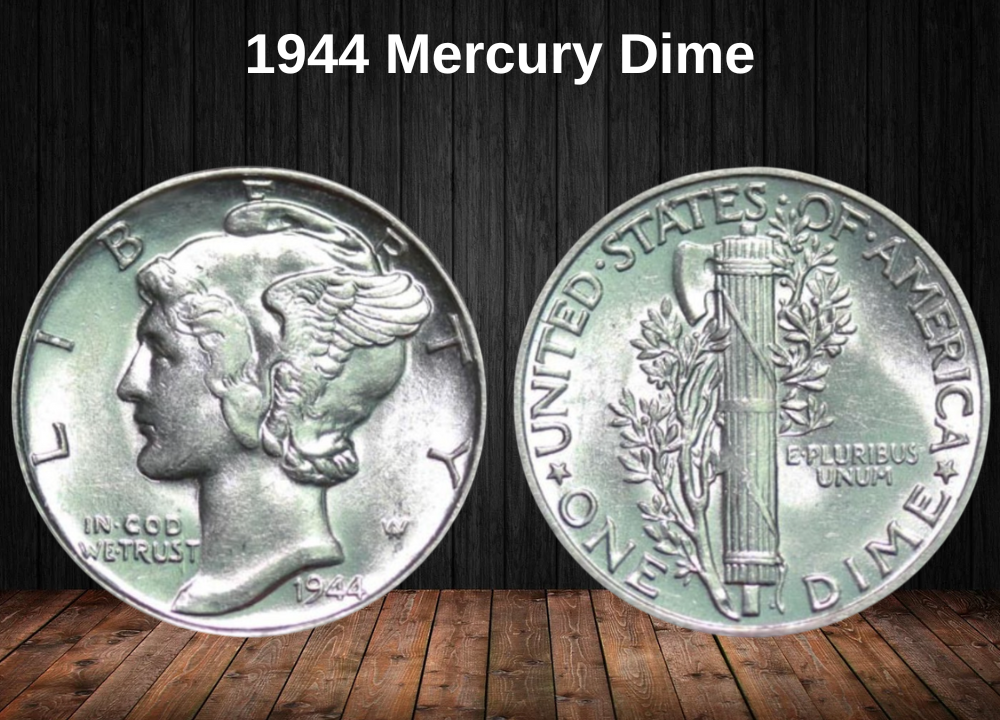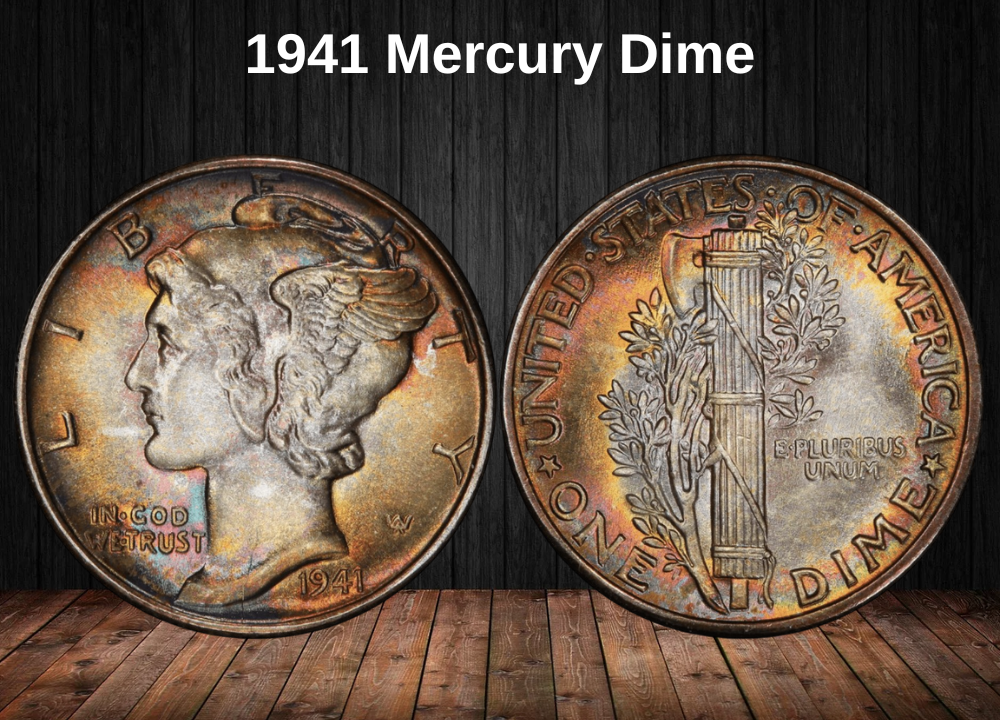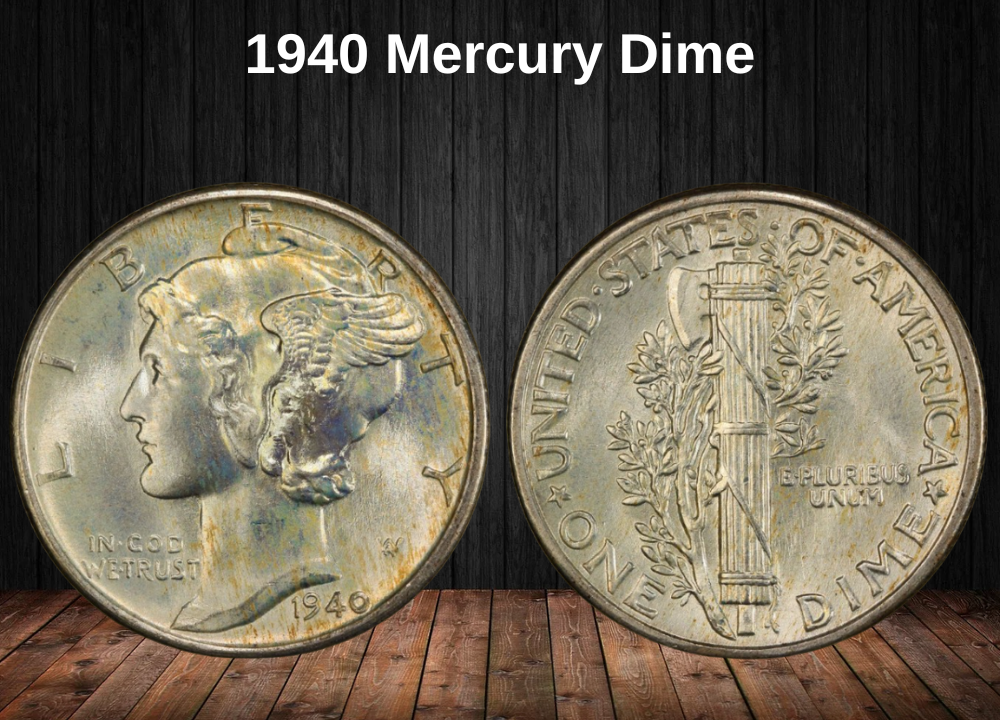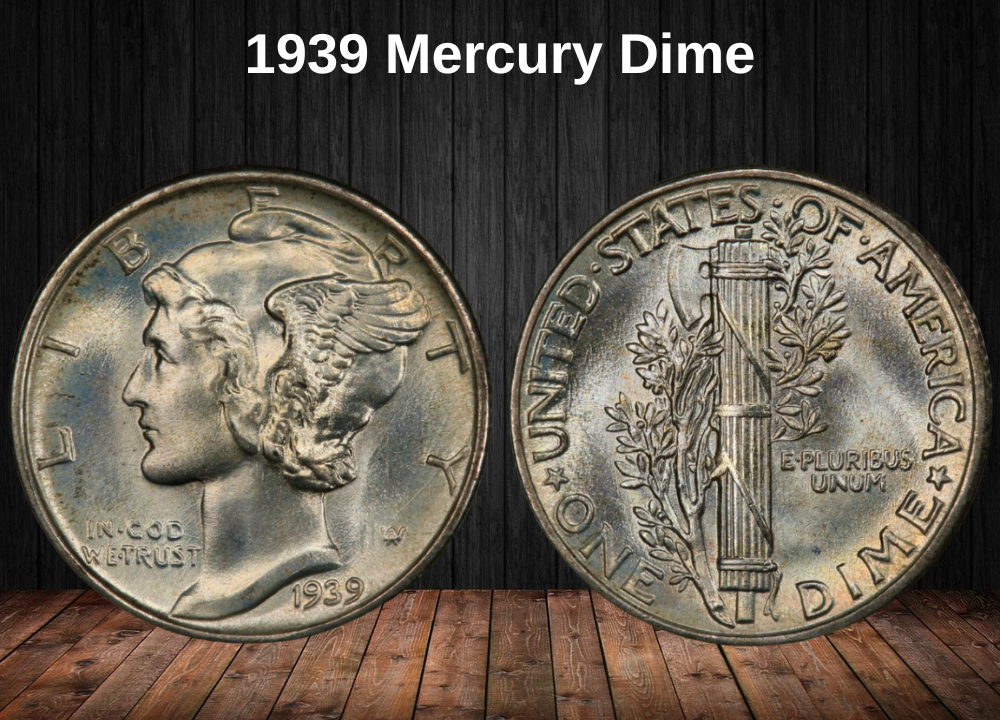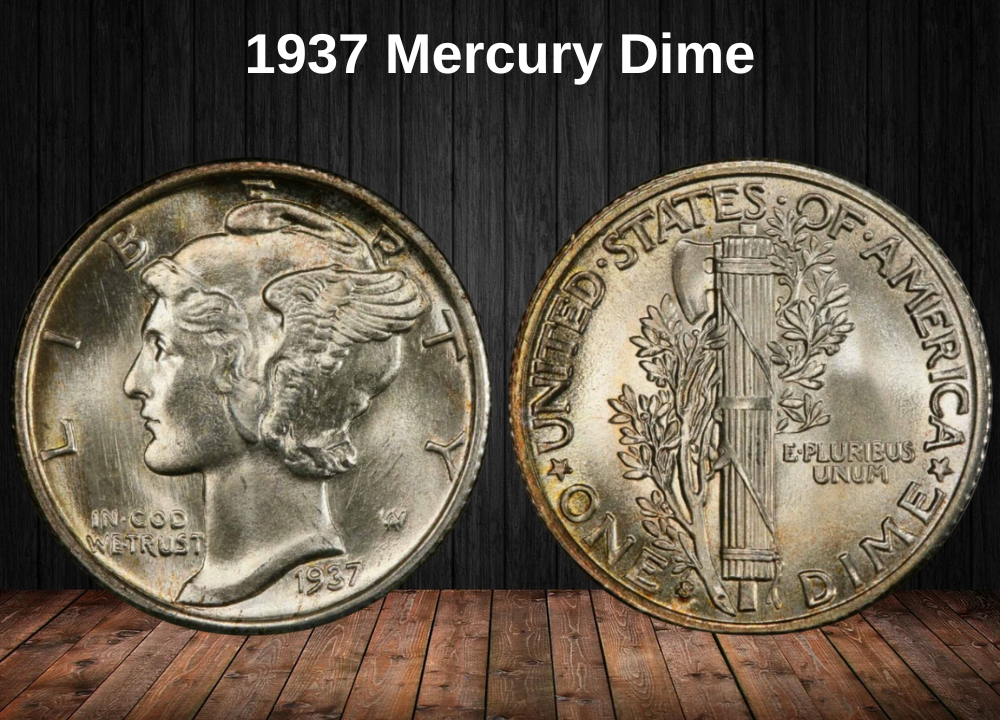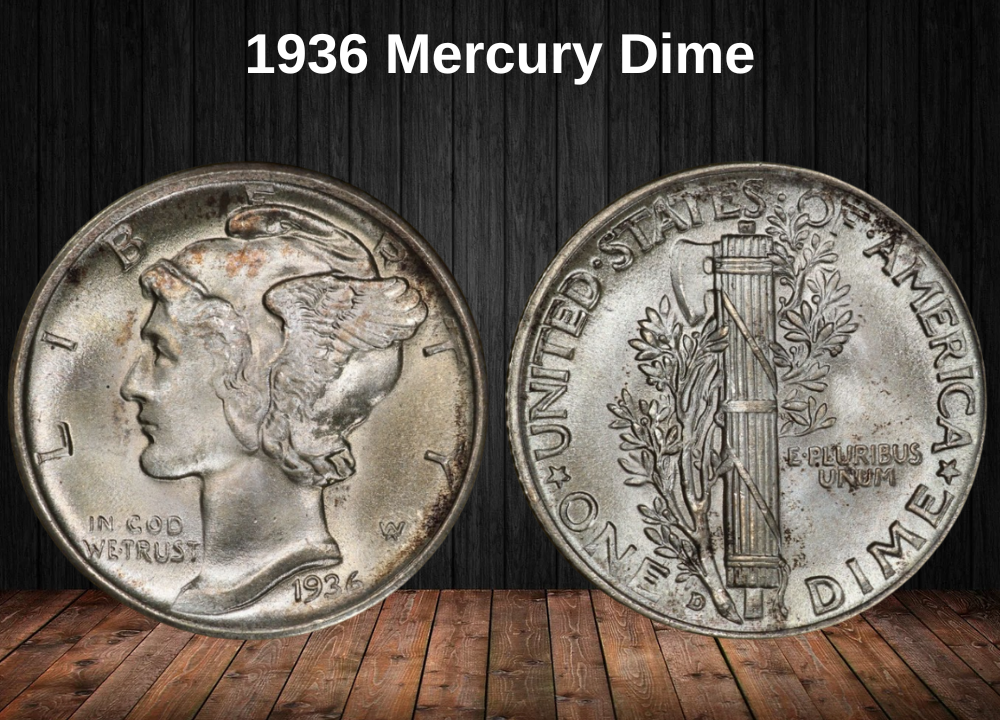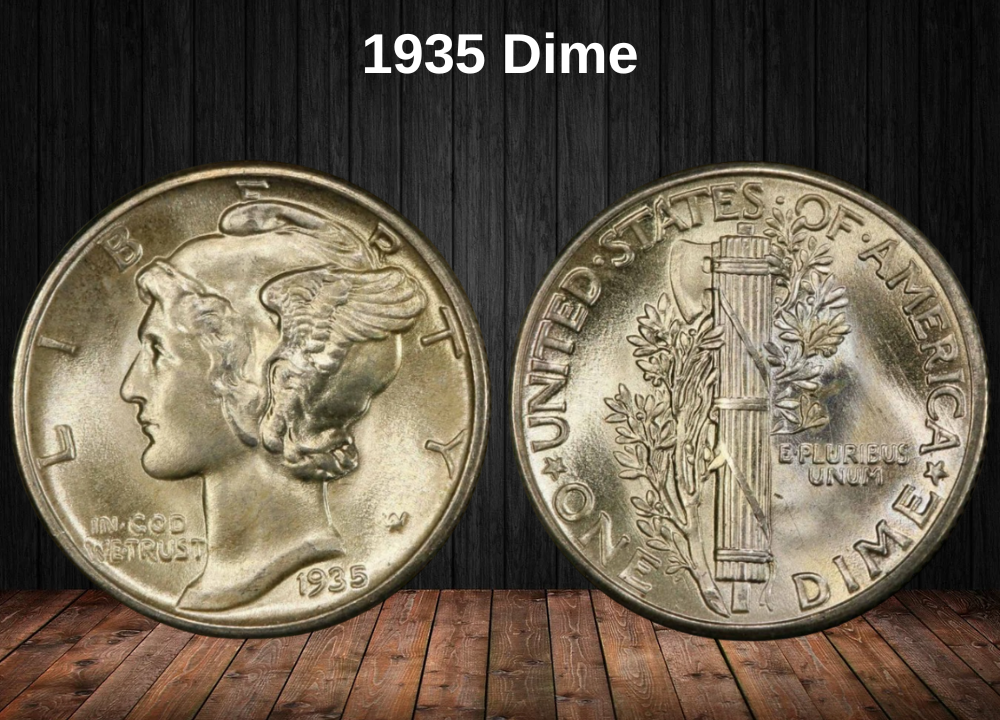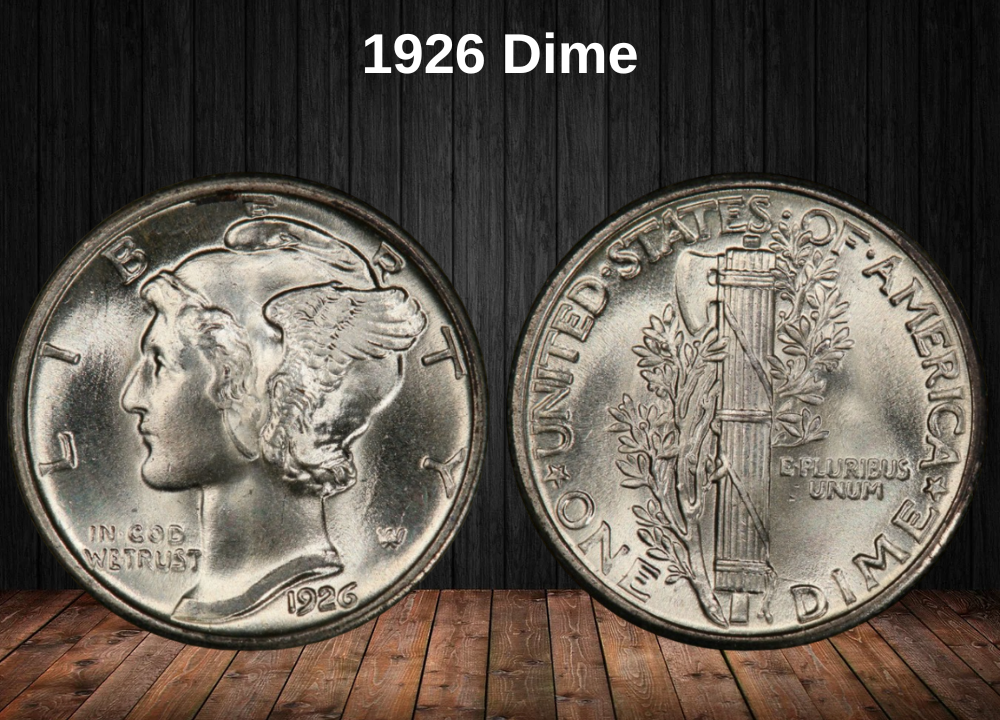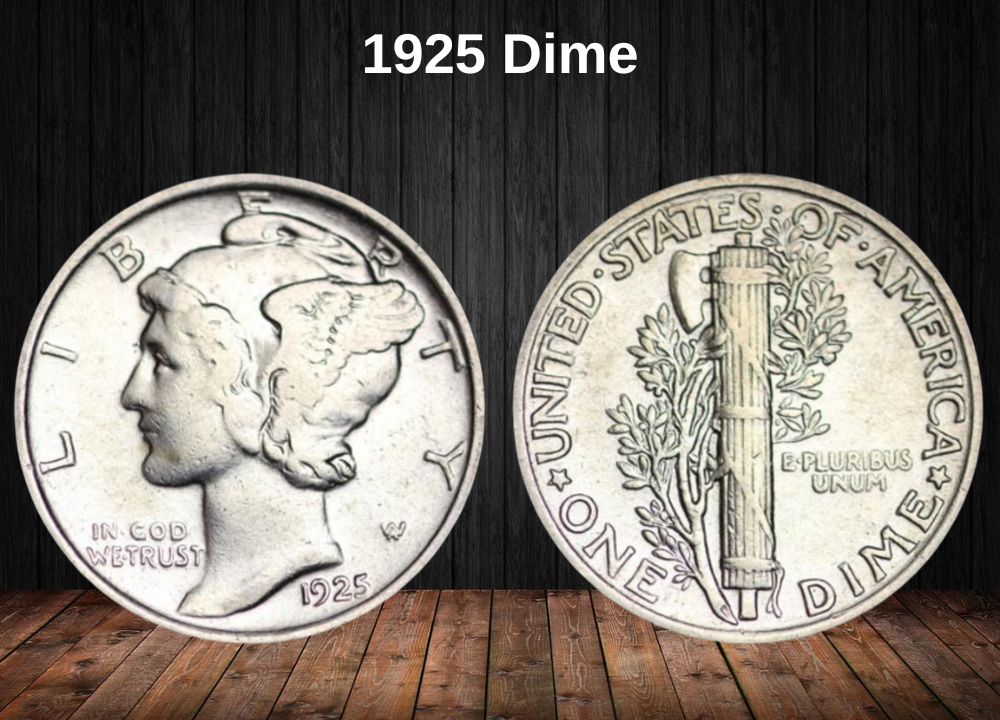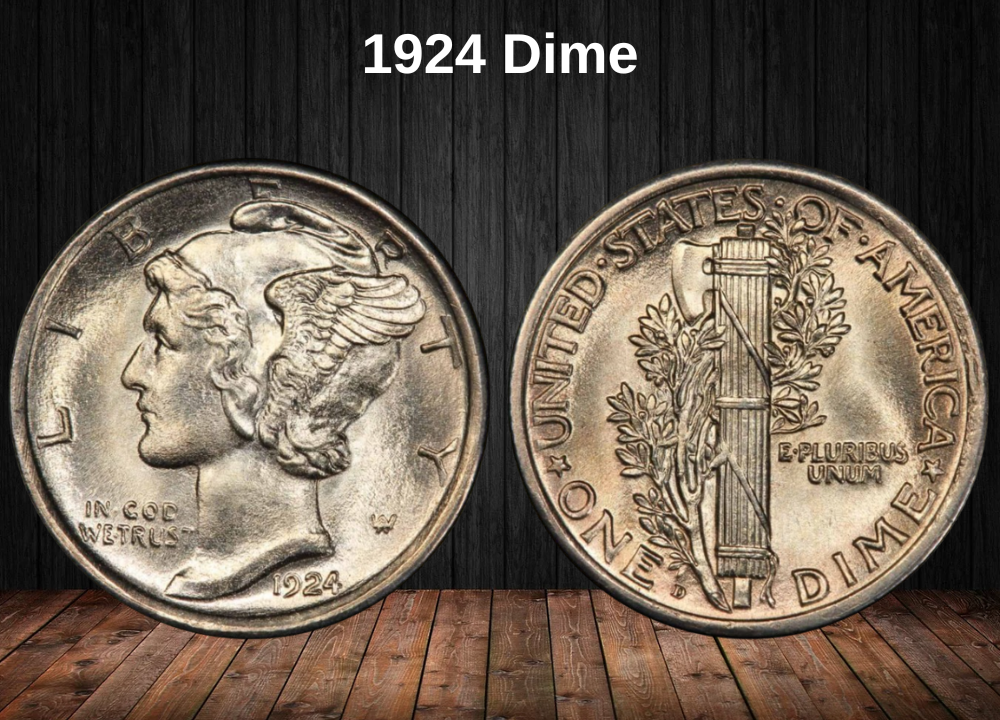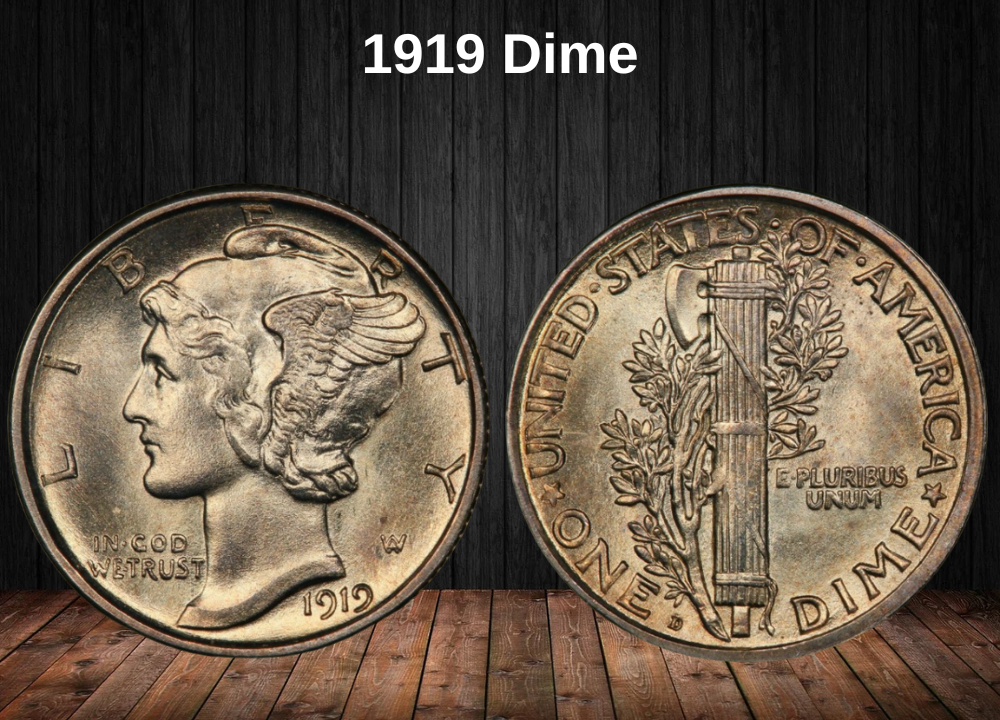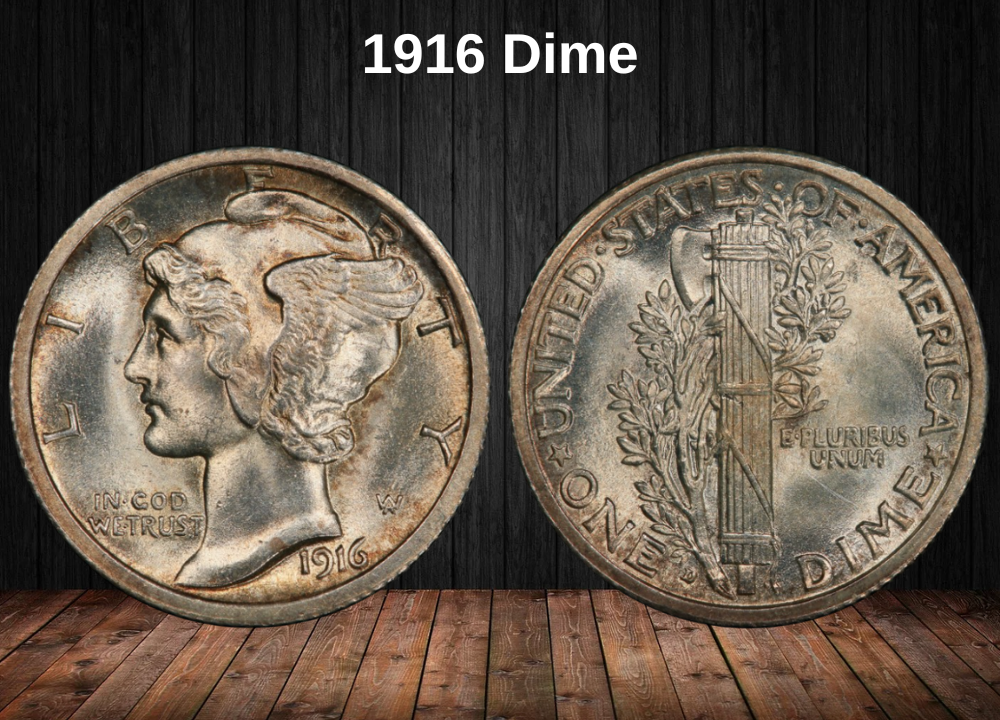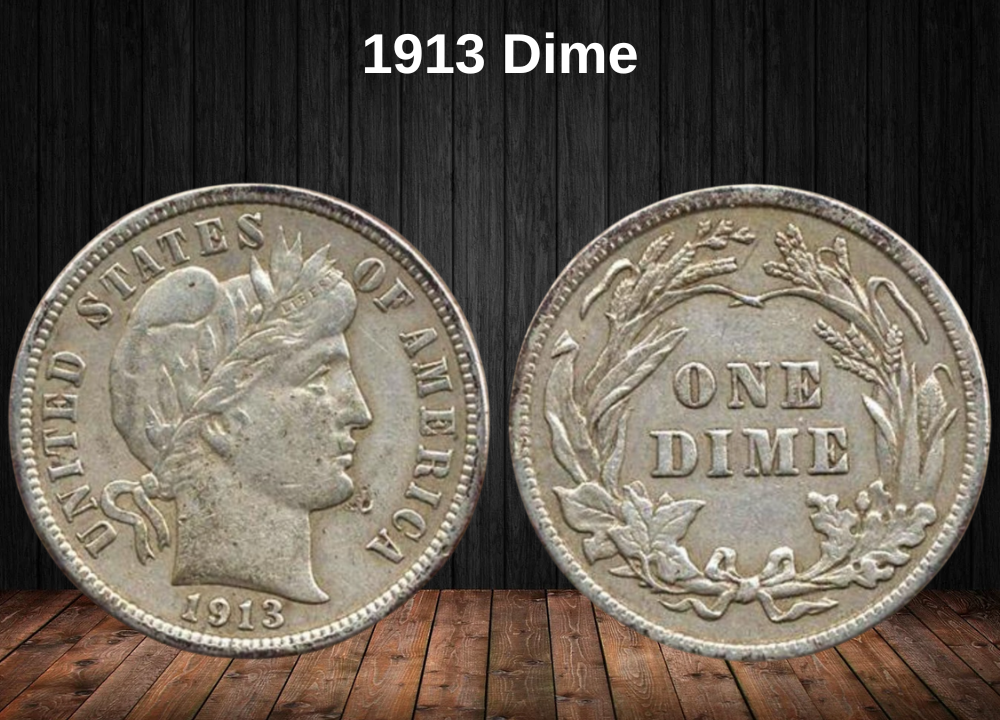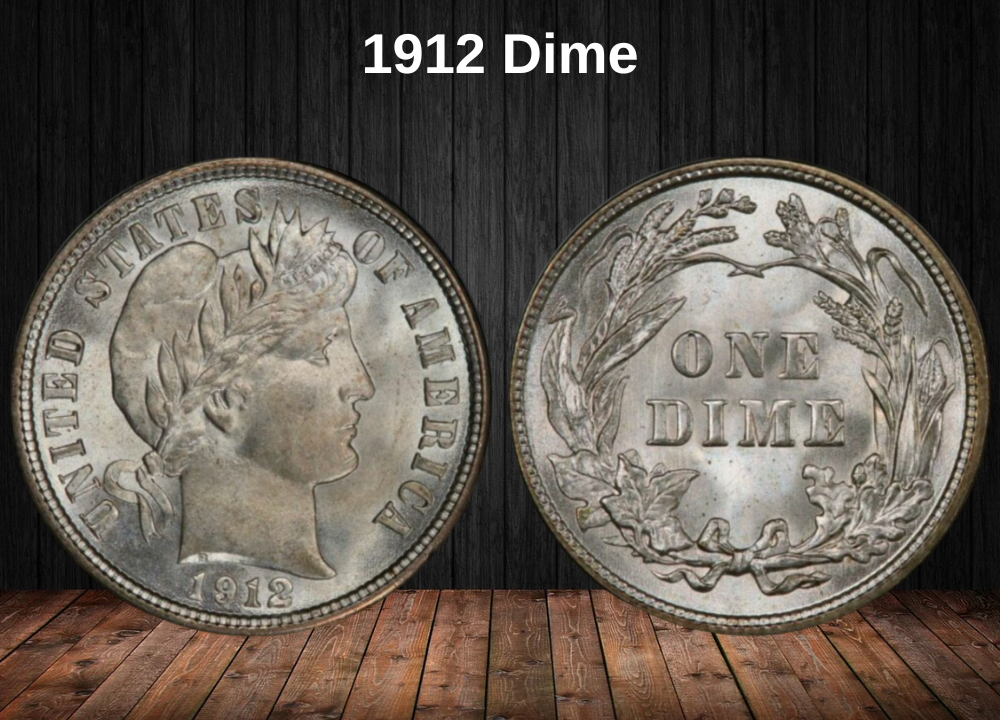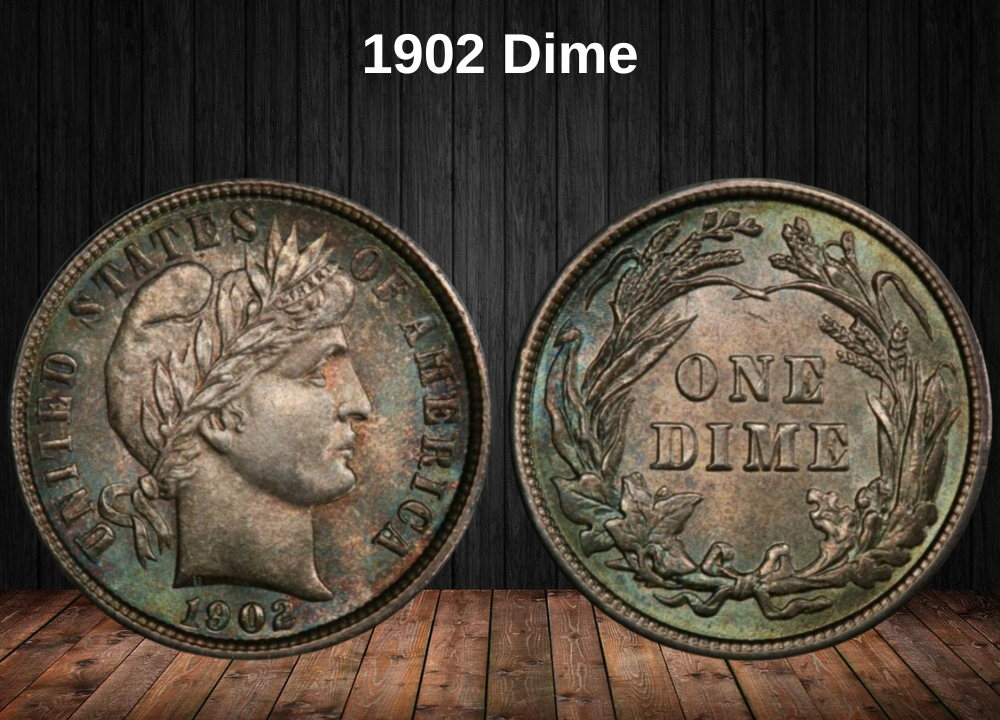Are you interested in collecting or selling 1970 dimes? You’re in the right place. While most of these coins are worth only their face value (10¢), certain mint errors, high grades, and proof strikes can make them significantly more valuable.
1970 Dime Value Chart
| Mint Mark | MS/PF60 | MS/PF63 | MS/PF65 | High Grade (MS67/PF69) |
|---|---|---|---|---|
| 1970 No Mint Mark (Philadelphia) | $4 | $5 | $12 | $1,200 |
| 1970-D (Denver) | $4 | $5 | $7 | $75 |
| 1970-S Proof (San Francisco) | $3 | $3 | $4 | $8 |
The History of the 1970 Dime
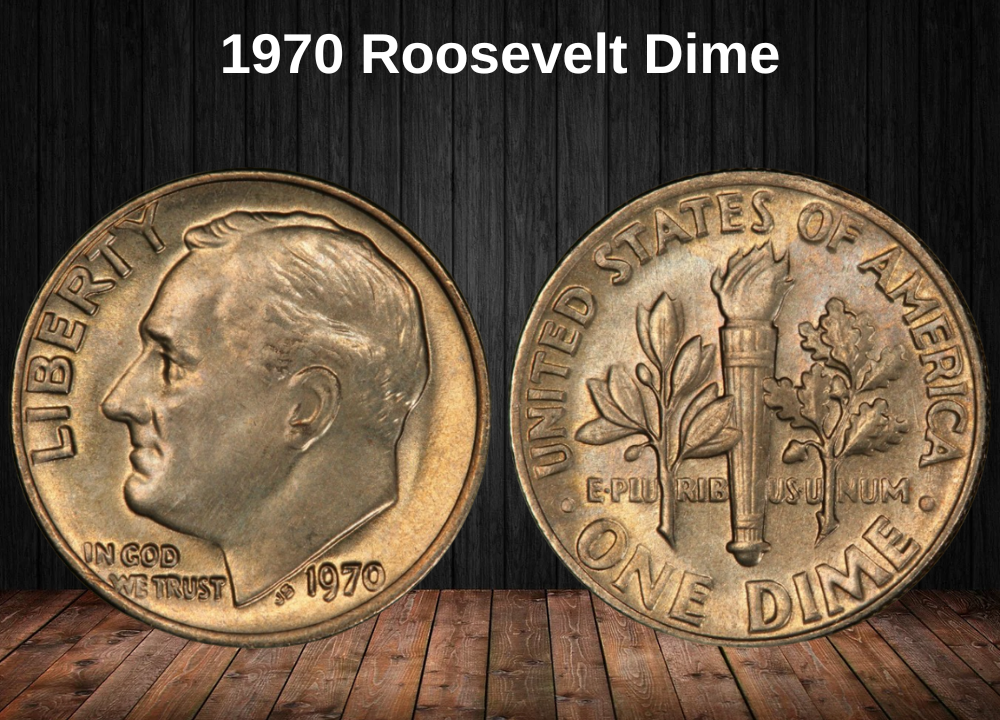
The Roosevelt dime was first introduced in 1946 and remains in circulation today, making it one of the longest-running coin designs in U.S. history.
The dime was created to honor Franklin D. Roosevelt, the nation’s 32nd president, who passed away in 1945 after a long struggle with polio. His battle with the disease inspired his support for the March of Dimes, an organization originally known as the National Foundation for Infantile Paralysis. The March of Dimes played a pivotal role in funding polio research and continues today by focusing on the health of mothers and babies.
Roosevelt was also admired for his leadership during the Great Depression and World War II, solidifying his place as one of America’s most respected presidents.
After the required 25-year period for coin design changes expired, the U.S. Mint decided to replace the Mercury dime with a coin commemorating Roosevelt. Because no additional congressional approval was needed, the Treasury Department directed Chief Engraver John R. Sinnock to design the new dime.
Sinnock’s initial designs faced criticism—particularly from Roosevelt’s political opponents and the Commission of Fine Arts—but after multiple revisions, the final version was approved. The Roosevelt dime was officially released on January 30, 1946, which would have been Roosevelt’s 64th birthday.
From 1946 until 1964, Roosevelt dimes were struck in 90% silver. Starting in 1965, the Mint transitioned to a copper-nickel clad composition, which continued through 1970 and remains today. Despite the metal changes, the overall design of the dime has remained nearly unchanged for decades, symbolizing both Roosevelt’s enduring legacy and the stability of U.S. coinage.
Features of the 1970 Dime
Understanding the unique features of the 1970 Roosevelt dime is essential for collectors and investors alike. These details not only help identify genuine pieces but also allow you to spot rare variations or errors that can increase a coin’s value.
The Obverse of the 1970 Dime
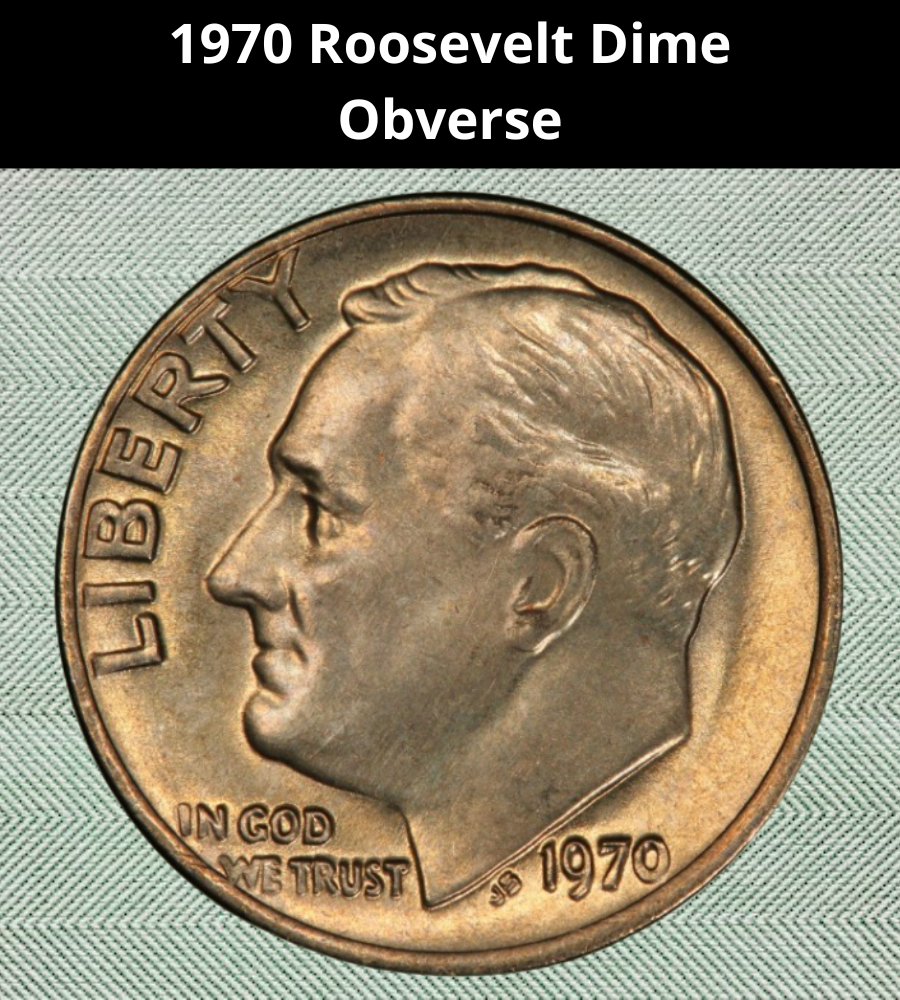
The obverse features the left-facing portrait of President Franklin D. Roosevelt, designed by Chief Engraver John R. Sinnock. To create this likeness, Sinnock relied on sketches and photographs of Roosevelt made during his lifetime.
- The word LIBERTY arcs along the left inner rim.
- The national motto, IN GOD WE TRUST, appears at the lower left.
- Beneath Roosevelt’s neck are the date and Sinnock’s initials “JS.” At the time of release, these initials stirred controversy, with some mistakenly believing they referred to Joseph Stalin, though they in fact honor the designer.
The Reverse of the 1970 Dime
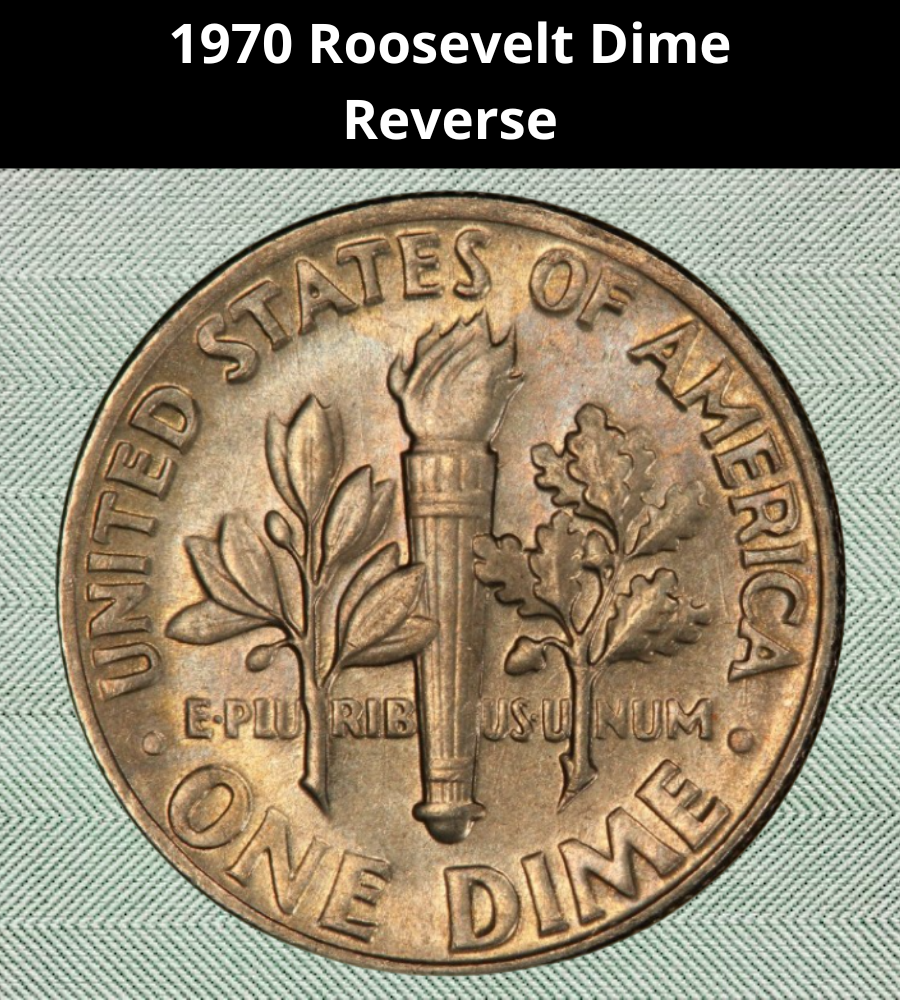
The reverse carries symbolic national imagery that has endured since 1946:
- A torch in the center represents freedom and liberty.
- An olive branch on the left stands for peace.
- An oak branch on the right symbolizes strength and independence.
- Across the center runs the Latin motto E PLURIBUS UNUM (“Out of many, one”).
- Around the rim are the legends UNITED STATES OF AMERICA (top) and ONE DIME (bottom), separated by small dots.
Other Features of the 1970 Dime
By 1970, the U.S. Mint had long transitioned away from silver coinage, so these dimes were struck in a copper core with a 75% copper / 25% nickel cladding, giving them a distinctive silver-gray appearance without containing precious metal.
- Diameter: 17.90 mm
- Thickness: 1.35 mm
- Weight: 2.27 grams
- Edge: Reeded, with 118 reeds.
Three Mints struck Roosevelt dimes in 1970: Philadelphia (no mint mark), Denver (D), and San Francisco (S for Proofs). Only the Denver and San Francisco issues display a mint mark, positioned on the obverse just above the date.
1970 Dime Grading
| Numerical Grade | Description | Collector Notes |
|---|---|---|
| 1 (Basal State-1) | Barely identifiable | Only outlines visible, essentially a filler coin |
| 2 (Fair) | Heavy wear, major details gone | Date usually still legible |
| 3 (Very Fair) | Slightly clearer than Fair | Few design elements visible |
| 4–6 (Good) | Heavy wear, outlines remain | Mottoes and date visible but faint |
| 7–10 (Very Good) | Major features clear, finer details lost | Portrait flat but identifiable |
| 12–15 (Fine) | Moderate wear | Some hairlines and branch details visible |
| 20–30 (Very Fine) | Moderate to light wear | Stronger detail on hair and torch |
| 40 (Extremely Fine) | Light wear on high points only | Most design elements sharp |
| 50 (About Uncirculated) | Slight trace of wear | Luster mostly intact |
| 60 (Mint State) | No wear, average strike | Basic uncirculated coin |
| 65 (Mint State Gem) | Sharply struck, nearly flawless | High collector premium |
| 70 (Perfect Mint State) | Absolute perfection | Rare and highly prized by registry collectors |
1970 Roosevelt Dime Value Guides
So, how much is a 1970 dime worth?
The value of a 1970 Roosevelt dime depends mainly on its condition, mint mark, and strike quality. Error varieties and Full Bands designations can also raise the price significantly.
Full Bands (FB) refers to the horizontal lines at the top and bottom of the torch on the reverse. Coins with this sharp strike detail are scarcer and bring higher premiums.
There are three main varieties for the 1970 Roosevelt dime:
- 1970 No-Mint Mark (Philadelphia)
- 1970-D (Denver)
- 1970-S Proof (San Francisco)
1970 No-Mint Mark Dime Value (Philadelphia)
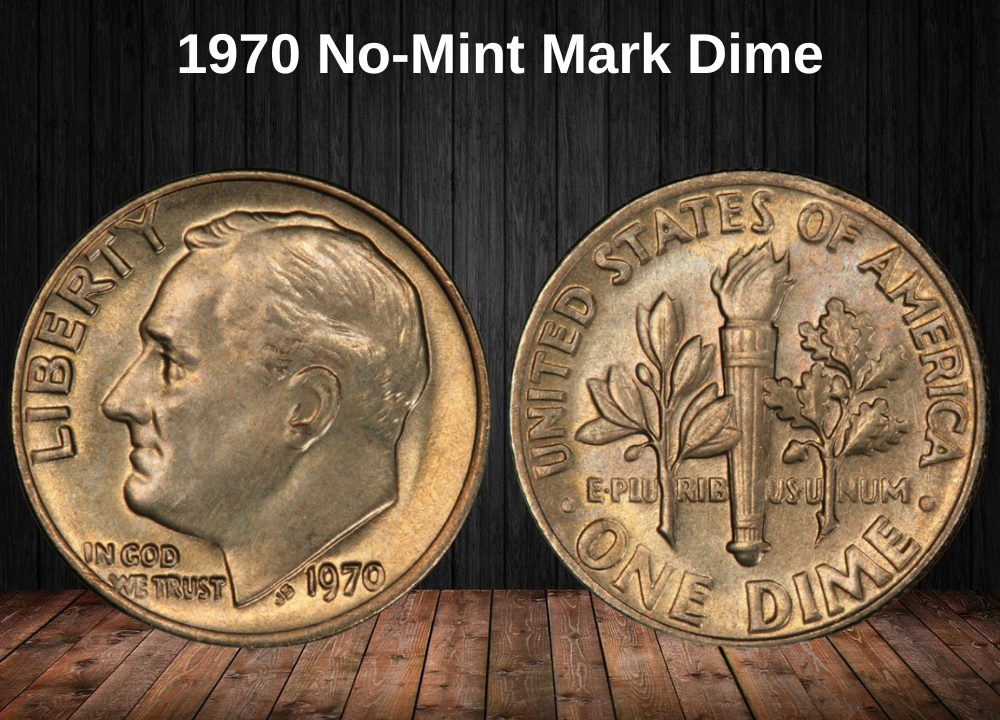
The Philadelphia Mint struck 345,570,000 dimes in 1970. These coins do not carry a mint mark.
- Circulated Value: $0.15 – $0.35
- MS65 Value: Around $12
- MS66 Value: About $42
- MS67 Value: Up to $1,200
Auction Highlight: A rare Full Bands MS66 sold in 2018 for $2,295.
1970-D Dime Value (Denver)
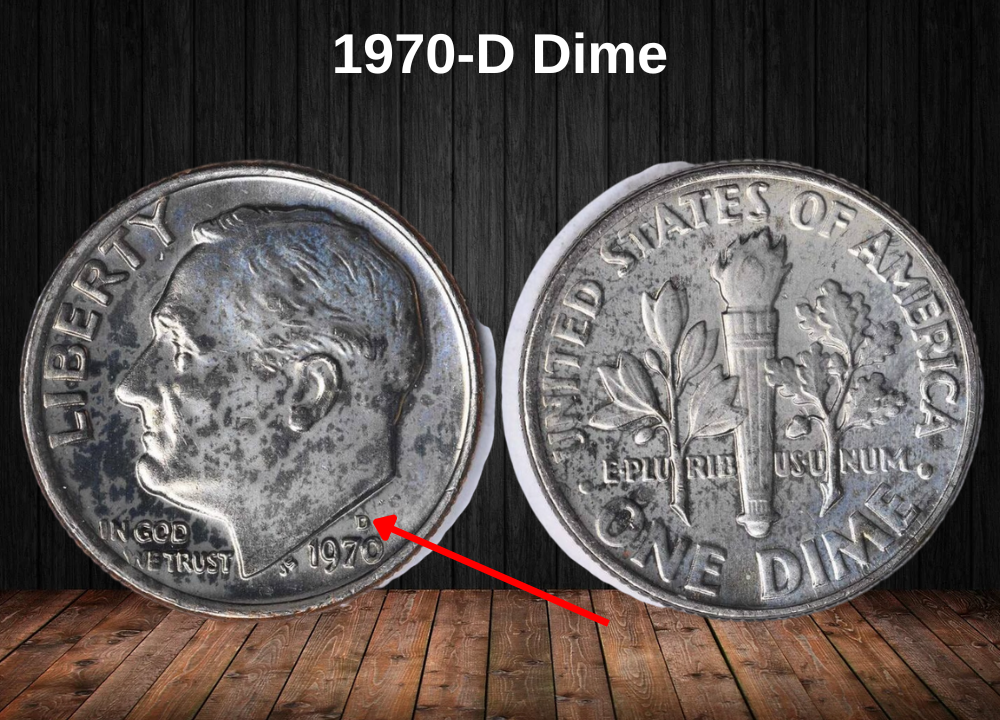
Denver produced the largest mintage in 1970: 754,942,100 dimes. These coins bear the “D” mint mark on the obverse above the date.
- Circulated Value: $0.15 – $0.35
- MS60–MS64: $4 – $6
- MS66: About $15
- MS68 Full Bands: A specimen sold for $646 (Heritage Auctions, 2014).
Note: Strike quality from Denver was often weak, so even Mint State coins are not sharply defined.
1970-S Proof Dime Value (San Francisco)
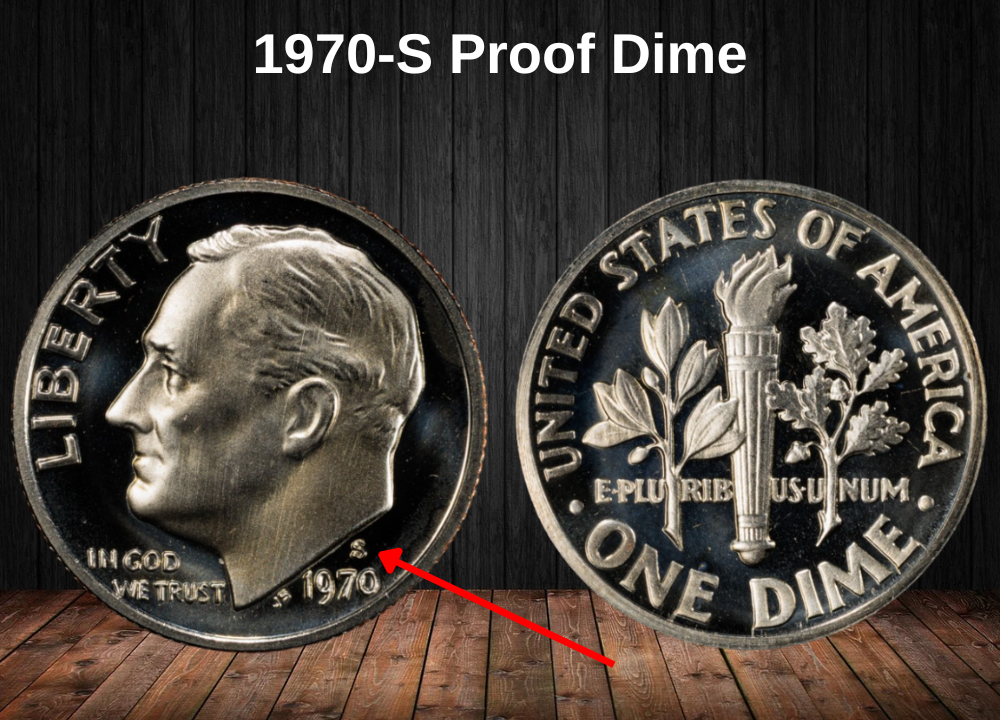
The San Francisco Mint struck 2,632,810 proof dimes in 1970. These coins were sold directly to collectors.
Interestingly, about 2,000 coins were struck without the “S” mint mark, making them a rare variety.
- PF69 Proof: $8
- PF69 Cameo: $18
- PF69 Deep Cameo: $65
The “No-S” Proof dimes are much rarer and command significantly higher prices.
Rare 1970 Dime Errors List
Overall, circulated 1970 Roosevelt dimes are very common and usually worth only face value. However, some mint errors can significantly boost their value among collectors. Below are the most notable error types for this year:
1970-D Off-Center Strike Dime Error
Off-center strikes occur when the planchet is not properly aligned with the dies, causing the design to be struck away from the center.
On 1970-D dimes, Roosevelt’s portrait may appear shifted toward the rim, sometimes nearly touching the edge.
- Value Range: $150 – $225 depending on grade and the percentage of off-center strike.
1970 No-S Proof Dime Error
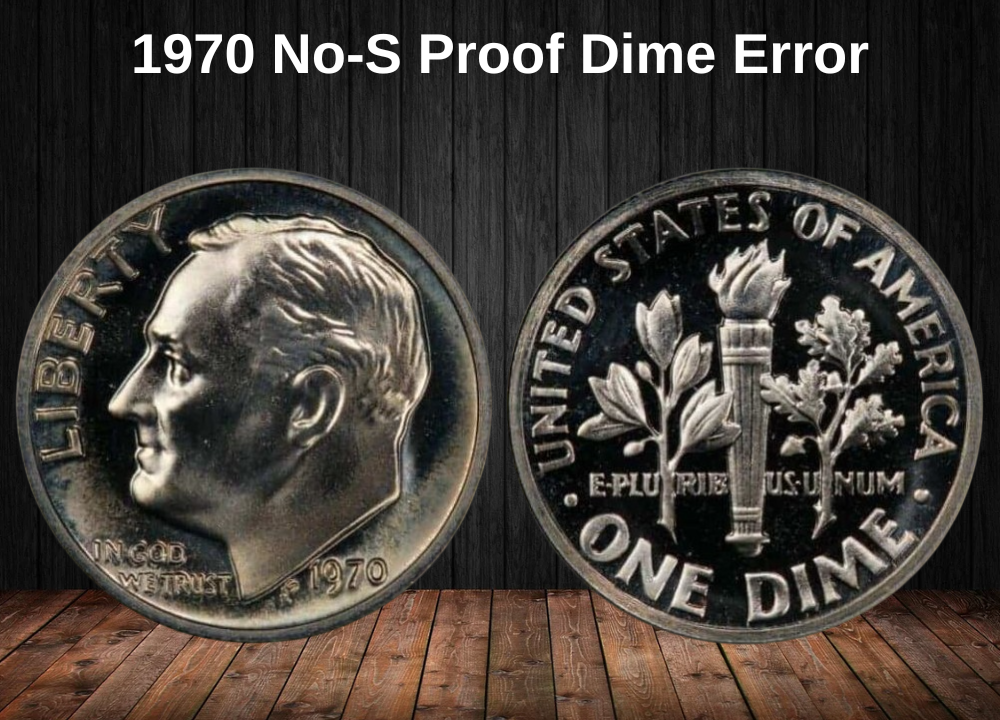
Out of 2,632,810 proof dimes struck at the San Francisco Mint, about 2,000 were mistakenly struck without the “S” mint mark.
This variety is one of the rarest modern U.S. coin errors and highly sought after.
- Regular Proof No-S: $700 – $800
- Cameo / Deep Cameo examples: Can sell for $1,000+ at auction.
1970 Dime with a 1968 Reverse Die Error
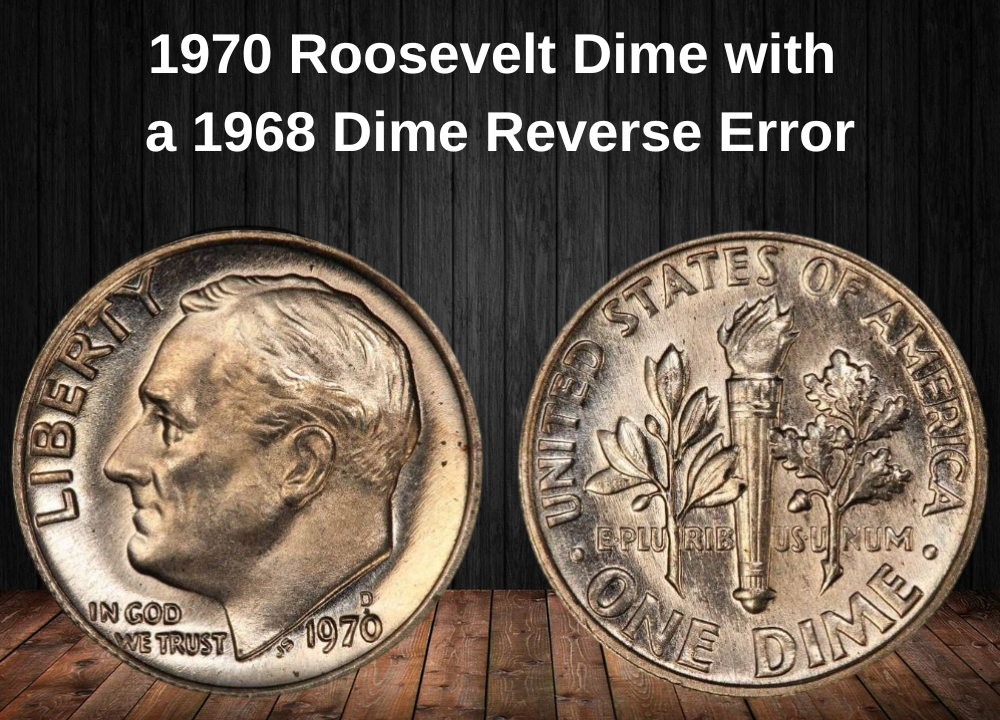
A rare die mix-up occurred when a 1970 obverse die was paired with an older 1968 proof reverse die. The reverse appears weakly struck, with dull or faint details on the torch and inscriptions.
- Value Range: $20 – $50 depending on condition.
1970 Doubled Die Reverse Dime Error
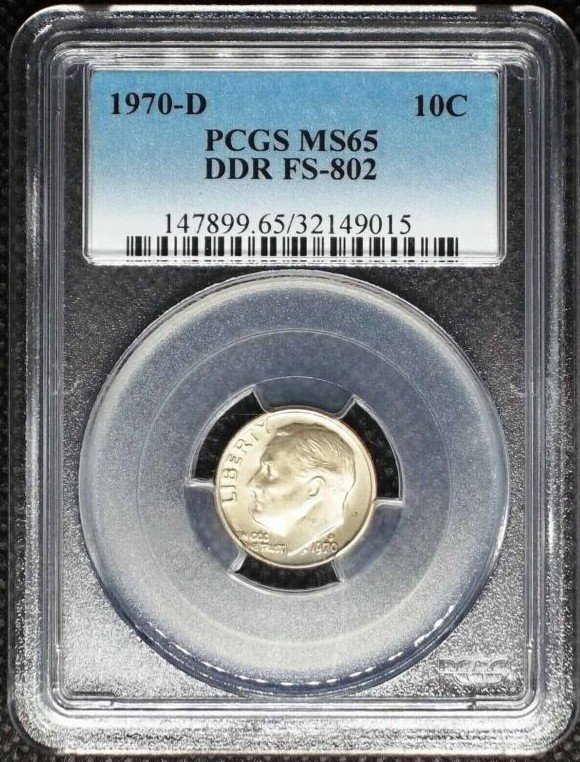
Doubled dies occur when the coin design is impressed onto the die at slightly different angles, creating visible doubling.
On 1970 Roosevelt dimes, doubling is most often seen on the reverse inscriptions, including UNITED STATES OF AMERICA and the denomination ONE DIME. In some cases, even tripling can be observed.
- Circulated Examples: $20 – $30
- Mint State Coins: Up to $90
Where to Sell Your Dime Coin?
Now that you know the value of your dime, the next step is deciding where to sell it. There are several trusted options—both online and in person—that can help you get the best price depending on your coin’s rarity and condition.
To see the full list of recommended places, along with their advantages and disadvantages, check our complete guide on where to sell your dime coins.
FAQ About the 1970 Roosevelt Dime
Is a 1970 dime made of silver?
No. By 1970, Roosevelt dimes were made of a copper core with a 75% copper and 25% nickel outer layer. The U.S. Mint stopped using silver in dimes after 1964.
Where is the mint mark on a 1970 dime?
On 1970-D and 1970-S dimes, the mint mark appears on the obverse, just above the date. Philadelphia coins from this year have no mint mark.
How much is a 1970 no-mint mark dime worth?
Most are common and worth about $0.15 to $0.35 in circulation. In high grades, values increase—an MS67 can sell for over $1,000, and a rare Full Bands example sold for $2,295.
What is the 1970-D dime worth?
Circulated examples are worth face value up to $0.35. Mint State coins are affordable, usually $4 to $15 up to MS66. The best examples with Full Bands may reach several hundred dollars.
What is the rare 1970 No-S proof dime?
About 2,000 proof dimes struck in San Francisco mistakenly lacked the “S” mint mark. These are extremely rare and can sell for $700–$1,000 or more, especially in Cameo or Deep Cameo condition.
Are there any valuable 1970 dime errors?
Yes. Notable errors include off-center strikes ($150–$225), doubled die reverses ($20–$90), and the 1970 No-S proof dime ($700+).
What does “Full Bands” mean on a dime?
“Full Bands” refers to the sharp, fully separated horizontal bands across the torch on the reverse. Dimes with this designation are better struck and worth a significant premium.


